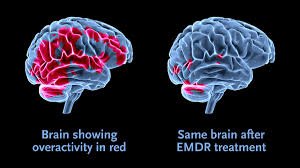What is EMDR?
How did EMDR Originate?
The mind can heal itself naturally, in the same way as the body. This natural healing occurs in our sleep, during rapid eye movement (REM). In 1987, Francine Shapiro, developer of EMDR, adapted the technique of REM to successfully treat Post-traumatic Stress Disorder (PTSD). Since then, EMDR has been used to effectively treat a wide range of emotional and mental health issues.
What evidence is there that EMDR is a successful treatment?
The validity and reliability of EMDR has been established by rigorous research. There are now well over 25 controlled studies into EMDR, making it the most thoroughly researched treatment method for mental and emotional issues. EMDR is recognized by: The American Psychiatric Association, American Psychological Association, Department of Defense, Veteran’s Administration, insurance companies, and the International Society for Traumatic Stress Studies as an effective treatment for various emotional and mental health concerns.
“A substantial amount of research indicates that adverse life experiences may be the basis for a wide range of mental, emotional and physical symptoms. Such as anxiety, depression, or high reactivity. Research into EMDR therapy has shown that processing memories of such experiences using EMDR results in the rapid amelioration of negative emotions, beliefs, and physical sensations.” *
Reports have indicated potential applications for patients with stress-related disorders, as well as those suffering from a wide range of physical conditions. ” —*Francine Shapiro.
Refer to the peer reviewed article published by the *National Institute of Health (.gov) to learn more.
Before and after EMDR brain scans:
Left photo shows woman with Post Traumatic Stress Disorder.
Right photo shows same woman after four 90 minute EMDR sessions.
The brightened areas indicate over-activity in the brain. *Photo by Dr. Daniel Amen
What can EMDR be used to treat?
In addition to its use for the treatment of Post-Traumatic Stress Disorder, EMDR successfully treats:
Anxiety and Panic attacks
Grief and loss
Depression
Sleep problems
Feelings of worthlessness / low self-esteem
Addictions
Anger
pain (including phantom limb)
Phobias
Performace anxiety
What will my sessions be like?
During EMDR treatment, you will remain in control, fully alert and wide-awake. This is not a form of hypnosis and you can stop the process at any time. Throughout the session, I will support and facilitate your own self-healing and intervene as little as possible. Reprocessing is usually experienced as something that happens spontaneously, and new connections and insights are felt to arise quite naturally from within. As a result, most people experience EMDR as being a natural and empowering therapy.
Originally, EMDR used eye movements to facilitate processing. Presently therapists use similar, but different types of stimulation to facilitate processing. During your sessions, I will use tabs that vibrate in the left and right hands to stimulate right and left brain activation. This is called Bi-Lateral Stimulation. I will activate the tabs while you review core memories that are the root cause of the issue/problem you have chosen to address in therapy.



